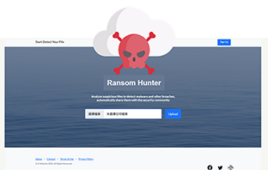Using (And Surviving) Social Media
 |
|
| Satirical Social Media Venn Diagram Courtesy of Despair.com |
This is indeed the age of social media and Web sites. While it seems as if a new one is launched every day, it’s not quite that bad. There are indeed a number of very well known ones, such as Facebook, Twitter and LinkedIn, but even here they are aiming to fill different niches.
While most have others directly competing with them, many of these have their own distinct target niche too, so while they may indeed be smaller, they frequently do a better job of serving their niche of choice.
In this column we’ll take a brief look at some of the social media sites currently out there and the niche they are attempting to fill. I hope to give you enough information so that you can decide if it appeals to you and will discuss available resources for those who want to find out more.
While MySpace was one of the first really prominent social Web sites, and is still very popular among some people and for some purposes, in many respects it has been eclipsed by Facebook. Facebook might best be classified as a general social media Web site in that it is used my many people for many different purposes. It is predominantly still a social site for personal purposes, though you will find that many companies, including Scientific Computing have a presence on it. Visit us at http://www.facebook.com/pages/Scientific-Computing/105628826139641 to see more.
Companies find it useful in a number of ways, including providing information about their product, providing customer service, and to provide a site for users of their products to interchange ideas. Used well, Facebook can be extremely useful in generating company loyalty. Used poorly, it can do more to drive users to competing products than anything else I can think of (other than just having a lousy product to begin with). Individual users find it a way to share interests, learn new things and predominantly as a way to stay socially connected with their friends and family.
Facebook was founded by Mark Zuckerberg, with the assistance of his college roommates Eduardo Saverin, Dustin Moskovitz and Chris Hughes, and went live on 4 February 2004.1,2 It has been surrounded by controversy since it’s founding, but has still managed to become the most popular social Web site, despite a history of information exposure gaffes and massive unannounced changes to its security policy. The primary impact of this being that the majority of the privacy settings require you to opt out of sharing your personal information with everyone, as opposed to having to opt in. Part of the appeal of Facebook is all of the applets that can run under it, literally numbering in the thousands. You will likely find some of these useful, in one way or another, with many being considered either fun or time wasters, depending on your point of view. Unfortunately, many are also attempts to obtain personal information for fraudulent use, so you would be well advised to be very careful which apps you access and what you post where, as you never know when it will come back to haunt you! There is a lot of truth to the adage about not posting anything you wouldn’t want your mother to see!3
You can find a variety of resource guides for using Facebook on the Web. If you are looking for more formal guidance on how to use it, I suggest obtaining a copy of Facebook: The Missing Manual, 2nd Edition, by E. A. Vander Veer [O’Reilly Media, ISBN: 978-1-449-38014-4, 257 pp, $19.99, ©2010], though it frequently seems that every publisher that’s even heard of the Internet has a Facebook guide out. While this book includes a great deal of information on how to best use Facebook for both personal and business use, I’d highly recommend a close reading of chapter 13 on how to configure your privacy settings.
For general professional activities, LinkedIn appears to be the most prominent service. Its stated goal is to assist you in building your business contacts network. Founded in December 2002, LinkedIn was launched the following May by Reid Hoffman and other founding team members from Paypal and Socialnet.com.4 Some disagree about referring to it as a ‘social’ site; instead referring to it as a business site, but the reality is that the same type of networking takes place. It’s just that the focus is on money and skills instead of sports teams or parties. In an attempt to help build trust within the site, LinkedIn applies a “gated access” approach to being able to access and search links. This means that to be able to contact someone on the site, you either must already have an established a relationship with them or else the active participation of users comprising the intermediate contact chain. While this site has definite dispersed value, in that it can help you make connections outside of your field, it also has a great deal of focused value, by aiding discussions between those in your field though the use of LinkedIn’s Groups and Questionnaires. As an example, those involved in laboratory informatics would quite likely find Gloria Metrick’s LIMS/Laboratory Informatics, Joe Liscouski’s Institute for Laboratory Automation and Andy Zaayenga’s Laboratory Robotics Interest Group (LRIG) of interest, as well as a score of others.
Information on using LinkedIn is available on the Web as well, but finding solid, reliable, information appears to be more of a challenge than it does with Facebook. While there are indeed books available on using it, there does not appear to be anywhere near as many from main line publishers as there are for Facebook. One exception is LinkedIn for Dummies by Joel Elad [For Dummies, ISBN-13: 978-0470281352, 360 pp, $24.99, ©2008]. A number of the other LinkedIn books, such as Neal Schaffer’s Windmill Networking: Understanding, Leveraging & Maximizing LinkedIn: An Unofficial, Step-by-Step Guide to Creating & Implementing Your LinkedIn Brand – Social Networking in a Web 2.0 World [BookSurge Publishing, ISBN-13: 978-1439247051, 382 pp, $24.95, ©2009] and Jan Vermeiren’s How to REALLY use LinkedIn [BookSurge Publishing, ISBN-13: 978-1439229637, 200 pp, $19.95 ].
Beyond a general professional site such as LinkedIn, there are also many focused social Web sites for professional interaction. Many of these attempt to cover multiple disciplines, others tend to focus on what you are doing, such as whether you are a researcher, as opposed to just the subject area. While many of these sites have been created, the unfortunate fact is, as Pedro Matos pointed out in the social networking site Nature Network,5 that this multiplicity disperses users across the systems, so that the power of the social networking effect is reduced, limiting their usefulness, as it is difficult for them to reach a critical mass of connections.
Research oriented network sites include BiomedExperts from Collexis, which has just been acquired by Elsevier, Academia.edu and ResearchGATE. Taking something of a step back toward Facebook are sites like Labroots which provides a variety of diverse ways to connect and share information. In some respects, these non-Facebook sites may be more risky, at least for social engineering attacks, simply because the sites are targeting professionals and it is very easy to forget all of the bad guys out there and lower your guard, assuming that everyone there is as professional as they seem.
Finally, in some ways tying everything together is Twitter. For those of you who have been living in an isolated cave without a teenager around, Twitter is a service that allows you to share 140 character messages, the size limit being imposed by the cellular telephone Short Message Service (SMS).* You might hear Twitter generically referred to as micro-blogging. This character limit tends to force users to be concise, but it is amazing how creative people can become at squeezing the maximum amount of information into these messages. While it is possible to just browse all of the Twitter posts, users normally specify various other users to ‘follow’, such as Scientific Computing at SciCom (http://twitter.com/scicom). These might be selected because they are monitoring vendors for update announcements, looking to learn from interesting people, or in some cases just immerse themselves in the trivia of someone else’ life. The way the system is designed, it encourages users to respond to posts and participate. Facebook, LinkedIn and many other social networking sites all have interfaces into Twitter.
One of the best quick and dirty guides to Twitter that I’ve seen is The Twitter Book by Tim O’Reilly and Sarah Milstein [O’Reilly Media, ISBN: 978-0-596-80281-3, 234 pp, $24.99, ©2009]. While they don’t keep their tips as short as a twit, they do hew to a minimalist approach, with a brief, succinct, tip and where appropriate, an example to illustrate its use. Tim O’Reilly is the founder of O’Reilly Media and can generally be found on the cutting edge of developing new technology and ways of doing things. He has an exceedingly impressive track record for recognizing and nurturing new technologies.
Used properly, Twitter can be an extremely useful tool. On a personal basis, as mentioned above, it does provide a good way to monitor a vendor’s product releases. It can also be a very good way to pressure a vendor in those instances where a newly released product or service does not live up to expectations. On a commercial basis, it can provide an extremely effective way to stay in touch with your customers and to build brand loyalty. When used properly (go back and read the book), it can be a very good customer service tool. Used poorly, your competitors would probably be more than happy to pay you to continue using it, as they will be happy to welcome your disgruntled former customers!
Because you can configure it to handle each person you are following individually, as well as control who can see your Tweets (for some reason they discouraged the use of Twitts to describe individual postings) you can bend it to do some very interesting things. One possibility is to use it as a back-up emergency notification system. For those with Neighborhood Watch programs, it provides a great way to get important notices out to your members. The caveat is that great care must be taken when relying on Twitter for critical notifications, as it’s not infrequent that it is either down or the usage has saturated their servers.
While these social media tools can be very helpful and enabling, depending on how you use them, they can put you at significant risk for identify theft and other abuses. The unfortunate fact is that too get maximum benefit from these sites, you need to populate their profiles with accurate information, which is just what an abuser loves to see. How you handle this depends, in part, on whether the accounts you are using are private or commercial.
If the accounts you are using are business accounts, you are probably not at great risk in posting detailed information about the company, most of that is probably already public information. I know that some corporate users I’ve spoken with basically leave the security settings wide open. If you are using your own personal account, I’d strongly recommend you be more selective. Basically this comes down to completing the part of the profile relevant to your area of interest. Examples might include completing the education section if you are trying to link up with old classmates or completing the politics section if you are attempting to link up with like-minded people, but to otherwise leave them blank. Not only does this deny the information to those who might abuse it, it also prevents anyone from using it for any other evaluation, appropriate or not.
Many people tend to post things on the Web as if the sites were private journals and seem almost shocked when it is pointed out that others can access that information. With all of the search and archive engines around today, once an item has been posted on the Web, it is almost impossible to remove it again. Posting the wrong things, no matter how humorous they might seem at the time, can result in firings, lost job opportunities and even arrests. It may be wise to take a few extra seconds and think thrice before making that next post!
Another item to be cautious of is the abuse of URL ‘shortening sites’ such as TinyURL, Bit.ly, Is.gd, and Twi.bz. These sites do exactly what the sentence above indicates. They take a long and detailed URL, such as
‘http://books.google.com/books?id=FQMTcOaTu4sC&dq=”open+source”+”data+acquisition”+program&printsec=frontcover
&source=in&hl=en&ei=U4ciTKi_KMX_lgea6MnYBQ&sa=X&oi=book_result&ct=result&resnum=
12&ved=0CFoQ6AEwCw#v=onepage&q&f=false
and returns a much shorter lookup link, such as http://tinyurl.com/25gqmu7. In reality they are not really shortening the URL as there is no way for them to modify the file locations or names on their target servers; what it actually does is store the original URL on its server and return a shorter URL which is then used to look up the original URL on their site whenever the look-up URL is activated. As some of the original URLs can be longer than the allowed message length of some services, you can see the need for them.
Above the space constraint though, the shortened URL is just much easier to type or write down, making it less prone to errors. Unfortunately, it also masks the content of the Web site that the link points to, so a visual inspection may no longer tip you off that it’s a phishing Web site. However, some of these URL shortening services, like TinyURL, have also started offering ‘preview’ versions, such as http://preview.tinyurl.com/25gqmu7. Yes, this URL is 8 characters longer than the other, but when you click on it, it takes you to the TinyURL Web site and displays the original URL for inspection. From the Twitter Web site you cannot see what the original URL looked like. If you are using one of the many Twitter management applications available, they may provide a preview of the original link for you to check before you blindly follow it.
So, what it comes down to is that the various social media Web sites can be extremely useful, but you need to carefully consider what you post on them to minimize the risk of adverse impact regarding your posted information. Let us know how you do and which of the services you find most useful. If you’d like us to explore any of the specific services mentioned in more detail, please let us know that as well.
| Related Resources | |
|
BiomedExperts |
|
|
BookSurge Publishing |
|
|
Despair |
|
|
Epernicus |
|
|
|
|
|
For Dummies |
|
|
Labroots, Inc. |
|
|
Linked-In |
|
|
My Space |
|
|
MyLinkWiki Wiki |
|
|
Nature Network |
|
|
O’Reilly Media, Inc. |
|
|
Open Future International LinkedIn Resources |
|
|
ResearchGATE |
|
|
Short Message Service (SMS) (Wikipedia) |
|
|
|
Bibliography
1. Carlson, N. How Facebook Was Founded. Business Insider, Inc. (2010). www.businessinsider.com/how-facebook-was-founded-2010-3
2. Facebook. Wikipedia, the free encyclopedia (2010). en.wikipedia.org/wiki/Facebook
3. Divorce lawyers: Facebook tops in online evidence. ECN: Electronic Component News (2010). www.ecnmag.com/News/2010/06/Industry-News/Divorce-lawyers-Facebook-tops-in-online-evidence
4. LinkedIn. Wikipedia, the free encyclopedia (2010). en.wikipedia.org/wiki/LinkedIn
5. Matos, P. Social networks for scientists from Scientific Researchers and Web 2.0: Social Not Working? forum on Nature Network. Forum on Nature Network (2009). network.nature.com/groups/socialnotworking/forum/topics/4534
*For those who are trivia oriented, 140 bytes is the maximum amount of memory in a message. Depending on the character encoding scheme used, this could equate to 160 characters (7-bit), 140 characters (8-bit), or 70 characters (16-bit). For ‘non-western’ character sets, 16 bit character encoding was pretty much mandatory. For English, Twitters messages use 7-bit encoding with 20 characters of the allowed 160 being used for header information.
John Joyce is the LIMS manager for Virginia’s State Division of Consolidated Laboratory Services. He may be contacted at [email protected].




